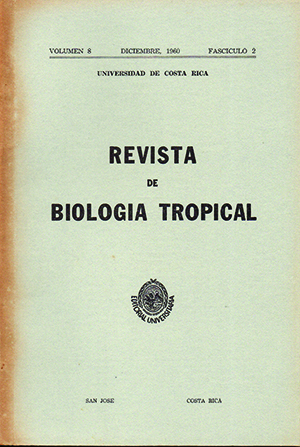Abstract
Complement fixation test for Chagas disease were carried out on 1 ,000 sera as follows: 706 from Hospital San Juan de Dios patients, 2 2 1 from blood donors of the' same Hospital, and 73 from patients of Asilo Chapuí for the insane.
The sera were first studied employing a slight modification of Kolmer's qualitative technique, in which culture forms of S. cruzi were used as the antigen. P9sitive (3 and 4 plus) anq qoubtful (2 plus) sera, thus obtained were analyzeq by the Freitas technique, using 50 per cent hemolysis as the reference point. As controls for both techniques, sera from 5 old cases of Chagas disease diagnosed parasitologycally, from 4 cases of cutaneous leishmaniasis, and from 1 0 apparently healthy persons were employed.
Using Kolmer's technique the following results were obtained: 61 positives (3 and 4 plus), corresponding 39 to patients of Hospital San Juan de Dios, 16 to blood donors, and 6 to Asilo Chapuí patients; in addition, 29 doubtful (2 plus) sera were encountered. The controls of trypanosomiasis cases gave reactions of 3 and 4 plus, and of those of the leishmaniasis cases only one serum gave a positive reaction (corresponding to a patient living a house where triatomid bugs were to be found).
The results obtained by the Freitas technique were as follows: out of 59 positive sera by the Kolmer technique all gave titers higher than 2.0; out of 28 doubtful cases using the same technique, 4 gave titers higher than 2.0, 7 gave a negative reaction, and 17 remained as doubtful (1.5 to 1.9). The positive cases as per the Freitas technique were as follows: 41 from Hospital San Juan de Dios, 17 from blood donors, and 7 from Asilo Chapuí. The trypanosomiasis cases used as controls gave titers higher than 2.0, and the qualitative test positive leishmaniasis case gave a titer of 3.0.
A comparative statistical analysis was made of the percentages obtained in cases from Hospital San Juan de Dios, blood donors, and Asilo Chapuí using both techniques, and it was found that no significant differences resulted.
The results obtained by both techniques are compared, and a perfect agrement is found among the positive reactions, although not among the doubtful Ones (2 plus); hence it is conduded that the Freitas technique is more specific than the Kolmer technique. The final avarage positive percentage on 1000 sera llsing both techniques is 6.5.
The low frequency o f 4 plus reactions obtained with qualitative technique are discussed, comparing them with the titers obtained by other researchers. Our results are attributed to the low antibody contet in the sera of Costa Rican Chagas disease cases.
The specificity of the qualitative test is commended since no single false positive test was obtained among 43 V. D. R. L. positive sera.
The possibility of transplacental passage of antiboides is mentioned in view of a case a newborn giving a positive complement fixation test.
Lastly, the danger constituted by complement fixation test positive blood donors (7.69 per cent) is pointed out in regards to the possible transmission of the disease during transfusion; mentioned is made in this regard to the possibility of obtaining complete sterilization of the blood by means of gentian violet, according to the publications of other authors.


